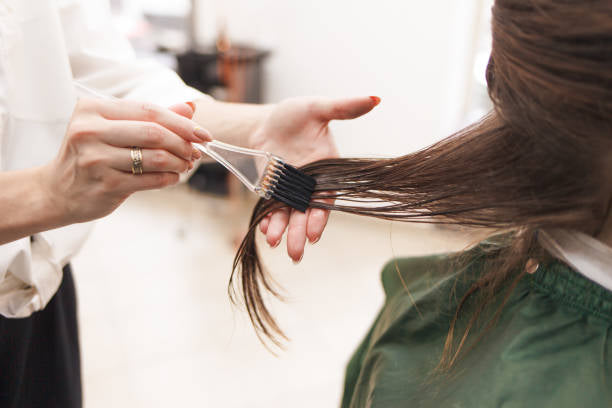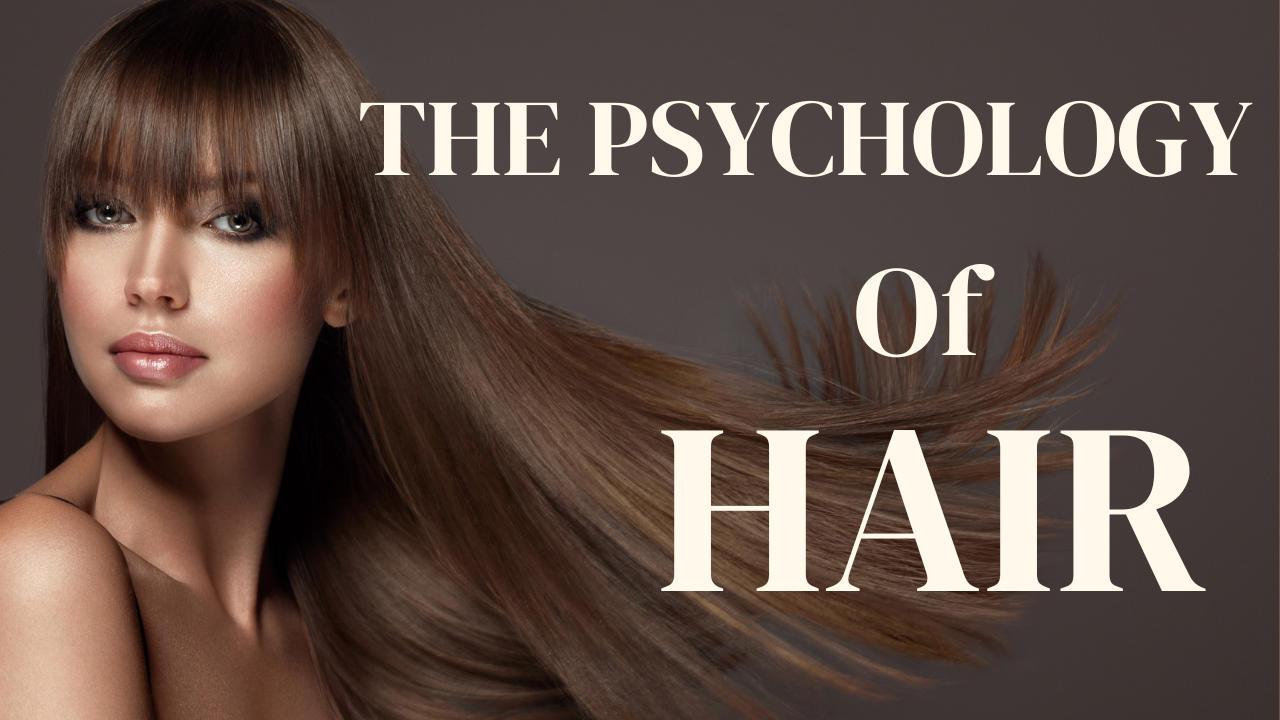The pursuit of healthy and shiny hair has led to a booming market filled with an array of hair treatments, each promising remarkable results. From repairing damaged strands to boosting growth, these treatments offer a variety of solutions. However, with the abundance of options available, it's crucial to decipher the truth behind their effectiveness. Let's dive into the world of hair treatments, exploring their different types, pros, cons, and most importantly, their impact on one's natural hair. In the end, we will decide a verdict based on the information of this blog. Let's go!
Understanding Hair Treatments: A Spectrum of Solutions
Hair treatments encompass a broad spectrum, catering to diverse hair concerns and goals. Below, we delve into some popular hair treatments, shedding light on their effectiveness and weighing their benefits and drawbacks:
Hair Treatment Benefits and Drawbacks
1. Keratin Treatment: For Smooth and Frizz-Free
What it is: A keratin treatment involves applying a specialised protein-rich formula to the hair, aiming to tame frizz, improve texture, and enhance shine. It is a salon procedure that aims to transform frizzy and unmanageable hair into smoother, shinier locks. During the treatment, a specialised formula containing a high concentration of keratin protein is applied to the hair. Heat is then used to seal the formula into the hair's cuticle, creating a protective layer. This process helps to reduce frizz, improve hair texture, and enhance overall shine. The results of a keratin treatment can last for several weeks, making it a popular choice for those seeking to achieve a sleek and polished appearance with minimal effort.
Pros: Achieves smoother, more manageable hair; reduces frizz and flyaways; imparts a glossy appearance.
Cons: Formaldehyde-based formulas may release harmful fumes during application; results may vary based on hair type and texture; can be expensive.
2. Hair Spa: For Nourishment and Relaxation
What it is: A hair spa treatment offers a holistic approach to hair care, combining deep conditioning, massage, and relaxation techniques to promote overall hair health. It is a rejuvenating treatment designed to address various hair concerns and promote overall hair health. It typically involves multiple steps. A customised blend of essential oils, masks, and serums is applied to the hair and scalp, providing deep nourishment and hydration. The treatment aims to repair damaged hair, improve blood circulation to the scalp, and relax the mind. Hair spas can help restore shine, manageability, and vitality to the hair. Regular sessions can contribute to healthier, more lustrous locks and a soothing experience of self-care.
Pros: Provides intense hydration to dry and damaged hair; stimulates blood circulation to the scalp; reduces stress and tension; enhances hair's overall appearance.
Cons: Results may be temporary and require regular sessions; may not effectively address severe hair problems; not a one-time solution.
3. PRP Therapy: For Revitalising Hair Growth
What it is: Platelet-Rich Plasma (PRP) therapy is a non-surgical medical treatment used to stimulate hair growth and rejuvenate the scalp. It involves drawing a small amount of the patient's blood, processing it to separate the platelet-rich plasma, and then injecting the concentrated plasma into the scalp. The growth factors in the plasma are believed to promote hair follicle health, strengthen existing hair, and encourage new hair growth. PRP therapy is often used to treat conditions like hair thinning, androgenic alopecia, and other hair loss issues. It's considered a safe and effective option, though multiple sessions may be required for optimal results.
Pros: Natural and minimally invasive; promotes hair follicle regeneration; improves hair density, thickness, and quality; can be used in conjunction with other treatments.
Cons: Requires multiple sessions for visible results; may not be effective for advanced hair loss cases; can be relatively costly.
4. Hair Botox: For Rejuvenation and Volume
What it is: Hair Botox is a hair treatment that aims to rejuvenate and revitalize damaged and dull hair. Unlike traditional Botox used for cosmetic purposes, hair Botox is a deep conditioning treatment that contains a combination of proteins, amino acids, vitamins, and natural oils. It is applied to the hair, and the ingredients work to repair and strengthen the hair fibers, reduce frizz, and improve overall hair texture. Hair Botox helps restore moisture, elasticity, and shine to the hair, making it appear healthier and more vibrant. It's a non-invasive option for those looking to improve the appearance of their hair without using harsh chemicals.
Pros: Restores hair's natural elasticity and strength; provides a healthier and smoother appearance; minimises breakage, split ends, and frizz.
Cons: Results are temporary and may require regular touch-up sessions; effects may vary based on individual hair conditions; effectiveness may be overstated by some brands.
5. Scalp Micropigmentation: For Illusion of Density
What it is: Scalp Micro Pigmentation (SMP) is a non-invasive cosmetic procedure that involves the use of specialized pigments to replicate the appearance of hair follicles on the scalp. It's often used to create the illusion of a shaved head or to fill in areas with thinning hair. During the procedure, tiny pigment deposits are applied to the scalp using a micro-needle, giving the impression of closely cropped hair or a stippling effect. SMP is commonly chosen by individuals with hair loss, alopecia, or receding hairlines to achieve a natural-looking, fuller appearance. It's a popular option for those seeking a low-maintenance and realistic solution for hair loss.
Pros: Creates the appearance of fuller hair coverage; suitable for various degrees of hair loss, including receding hairlines and bald patches; non-surgical and non-invasive solution.
Cons: Requires precision and skill to achieve natural results; may not be ideal for individuals with certain skin conditions or sensitivities; needs periodic touch-ups.
6. Separating Fact from Fiction: The Verdict on Hair Treatments
The effectiveness of hair treatments isn't a one-size-fits-all proposition. Individual factors such as hair type, condition, genetics, and lifestyle play a significant role in determining the outcome of any treatment. It's essential to consult with a licensed professional before undergoing any treatment to ensure it's suitable for your unique hair profile and needs.
7. The Bottom Line: Making Informed Choices
While hair treatments offer a variety of benefits, they aren't a magic bullet for every hair woe. Relying solely on treatments without addressing underlying issues such as nutrition, stress, and proper hair care may yield temporary results. By consulting a hair specialist, understanding the potential benefits and drawbacks, and setting realistic expectations, you can embark on a treatment journey that aligns with your hair goals.
Conclusion
In the realm of hair treatments, education is paramount. Armed with knowledge, you can navigate the world of treatments, make informed decisions, and select the treatments that resonate with your hair aspirations. Remember, the journey to healthier, more beautiful hair involves a blend of appropriate treatments, diligent care, and a holistic approach that addresses both the external and internal factors influencing your hair's well-being.
And you can always opt for hair extensions and hair wigs as an alternative to such hair treatments. In this way, you can easily transform your hair in a non-invasive and hassle free way! Gemeria offers top quality hair extensions and wigs at affordable prices, check them out.














